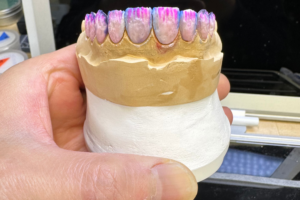 Alternatives to Cytotec: Drugs, Therapies, and Innovations.
Alternatives to Cytotec: Drugs, Therapies, and Innovations.
Safer Medication Options: Benefits, Risks, and Evidence 💊
Patients and clinicians increasingly seek alternatives that balance efficacy with safety, and stories of unexpected side effects have reshaped prescribing habits. Clear evidence supports agents with lower systemic exposure, yet individual risk factors—age, comorbidity, and concomitant meds—change the calculus and prompt shared evaluative conversations.
Clinical trials and meta-analyses highlight drugs that reduce adverse events compared with older options, but data gaps remain. Observational studies add real-world nuance: milder side-effect profiles may trade off with slower onset or restricted indications, requiring clinicians to tailor choices.
Implementation includes counseling, monitoring protocols, and stepwise escalation when needed. Regulators weigh benefit–risk and update guidance as new evidence emerges, so clinicians should actively recieve updated recommendations and document discussions to protect patients and inform future care. Systems-level training, accessible formularies, and reimbursement reforms are critical to broaden safe options equitably across regions and populations globally.
Non-pharmacologic Therapies: Methods, Outcomes, Patient Experience 🧘

A nurse led breathwork session described how mindfulness, acupuncture and pelvic physiotherapy reduced pain and bleeding, offering alternatives alongside cytotec in some settings.
Teh patient narratives mix hope and realism: reduced hospital stays, subjective comfort gains, yet larger studies are necessary before wide adoption elsewhere.
Clinicians emphasize shared decision making, tailoring non drug paths to comorbidities; some prefer hands on therapies while others seek minimal intervention.
Follow up and clear protocols matter: informed consent, monitoring for complications, and emotional support turn tentative choices into safer, person centered care journeys today.
Off-label and Combination Drug Strategies Weighed ⚖️
Clinicians sometimes turn to creative drug combinations or unlabeled uses when standard options fail, and stories of cytotec paired with other agents have circulated in case reports. Decisions hinge on individual risk profiles and local formularies.
Small trials and registries provide fragments of evidence; benefits are often modest, harms can be serious, and dosage standards remain unsettled. Meta-analyses are scarce and heterogeneity is high.
Patients report relief but also confusion: informed consent, careful monitoring and access to reversal strategies matter, and adverse events Occassionally reshape practice.
Clinicians must weigh plausible mechanistic rationale against safety data, discuss tradeoffs openly, and advocate for trials so clinicians and patients can recieve robust guidance. Pooled data would reduce uncertainty.
Breakthrough Drug Innovations and Delivery Systems 🚀

In recent years researchers shifted from single agent regimens toward targeted molecules and smarter delivery, offering alternatives to older drugs like cytotec. Imagine a patch that releases microdoses over days, reducing peaks and side effects while keeping efficacy. Teh science feels hopeful.
Nanocarriers, inhaled aerosols, and implantable depots are in trials, showing improved dosing precision and fewer systemic reactions. Early-phase results suggest faster onset and lower hospitalization rates, but regulatory hurdles and manufacturing scale remain obstacles.
Clinicians must balance promise with evidence: well designed RCTs, postmarket surveillance, and patient centered outcomes are necessary to accommodate real world needs. Patients should recieve clear information to participate in shared choices as therapies evolve and monitor safety proactively.
Global Availability, Regulations, and Access Challenges 🌍
As a clinician who has worked in clinics from city hospitals to rural outposts, I’ve seen how access to essential medications like cytotec is shaped by policy, supply chains and local practices. Regulations range from strict approval pathways to permissive off-label use, and patients often face patchwork availability, uncertain quality, and the stress of seeking safe care across borders.
Practical remedies include harmonized guidelines, strengthened procurement, and community training, supported by data on safety and outcomes. Telemedicine and local manufacturing of generics can reduce shortages, while pharmacovigilance and cross-border cooperation deter counterfeit products. Meaningful change requires political will, transparent regulation, and investments that a Goverment and clinicians can jointly champion and expand affordable, monitored distribution.
Shared Decision Making, Safety Monitoring, Patient Stories ❤️
At the clinic, a woman and her clinician mapped out options together, weighing evidence, side effects and personal priorities so she could recieve clear guidance and set realistic expectations. Narratives from others who chose different paths help illuminate trade-offs: some report rapid recovery and minimal upset, others recount anxiety or extra visits. Clinicians should frame probabilities simply, invite questions, and document preferences, turning technical data into a useable plan that respects values and risk tolerance.
Robust follow-up emphasizes early detection of adverse events and easy access to support, through telehealth check-ins, hotlines, and clear escalation steps. Safety data collection should be standardized and transparent so clinicians can adapt care in real time; patients' stories feed quality improvement and policy change. Creating a nonjudgmental enviroment for reporting concerns lowers barriers and helps teams tailor responses and build lasting trust in care. WHO guideline on postpartum haemorrhage (misoprostol) Misoprostol research on PubMed












